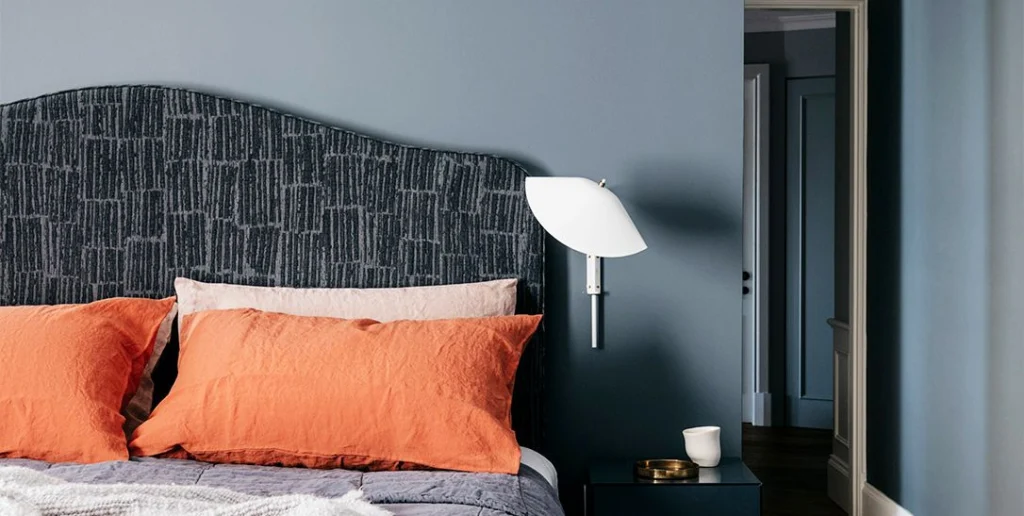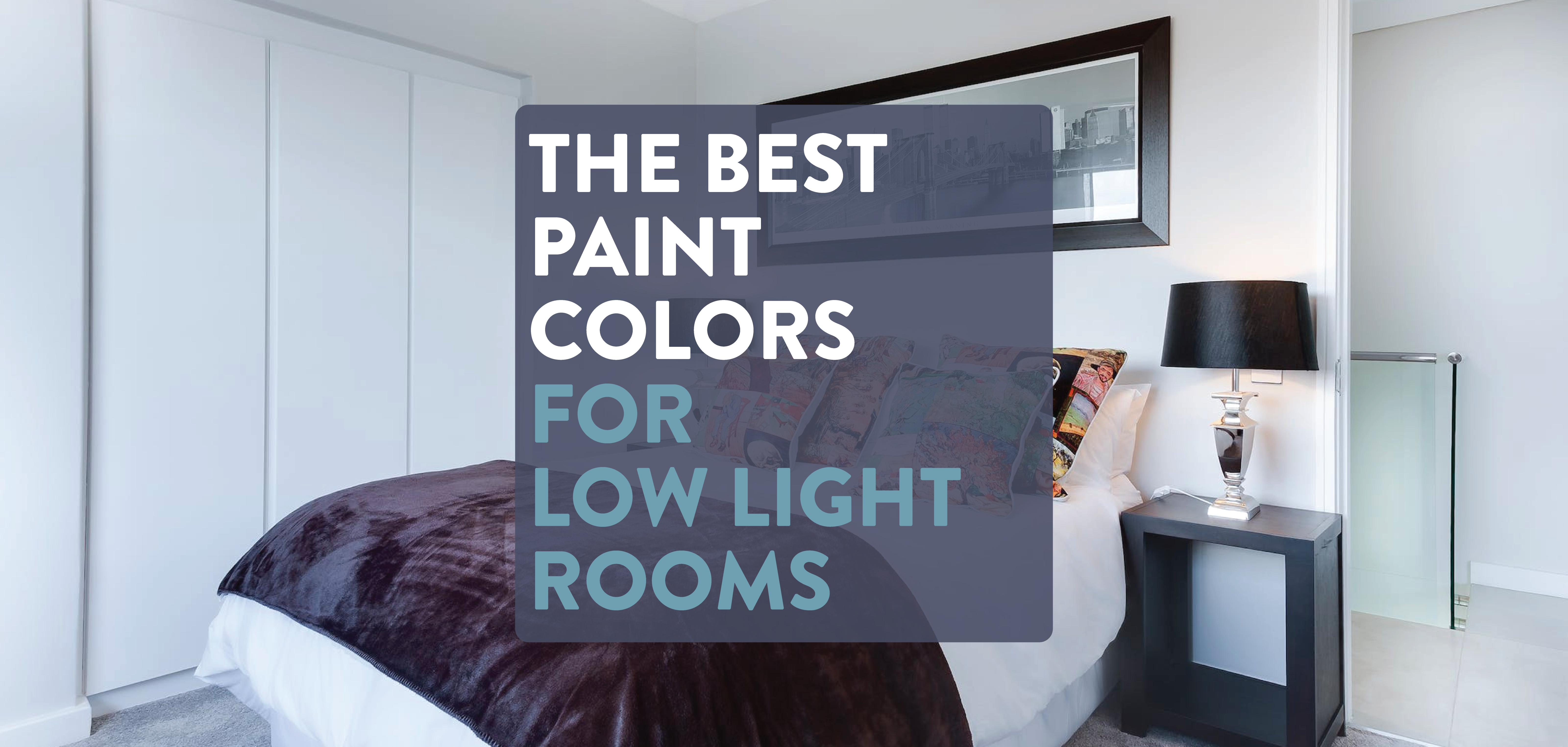Selecting the best paint colors for low light rooms can be a tricky task. You need to take a lot of things into account in order to find the right color. You need to consider things like the color of the walls, how much natural light the room gets, and how you want your room to feel.

Grays For Low Light Rooms
Whether you are painting your home or choosing a paint color for a room, gray is a safe choice. It is versatile enough to work with any color and is a great backdrop for any decor. Gray also creates a tranquil, relaxing feel and can be used in all areas of the home.
When selecting a paint color, it’s important to remember the importance of undertones. Undertones add nuance and complexity to the color. They can make a room look brighter or darker. Also, undertones may change depending on other colors in the room.
A gray shade may have one or two undertones, depending on how the light in the room is. Cool grays, or “blue-grays”, tend to show more blue undertones than warm grays, or “greiges.”
Grays can be used in any room, but are especially suited to rooms that get little natural light. This makes them perfect for a bedroom or a living room.

To choose the best gray for a room, it’s important to test the color in different lighting situations. You can do this by using gray color samples on the wall and then moving them around the room. You can also use a large poster board to test the color in different lighting.
The best color to use in a low-light room is a light neutral with warm undertones. These colors make a room look brighter and more open.
Tan For Low Light Rooms

Choosing the right paint colors for your home can be a difficult task. The color you choose says a lot about your lifestyle, and you want it to look good in your home. Whether you want a warm and cozy color, or a cool, sophisticated look, there are plenty of tans to choose from.
Generally, warm colors tend to recede into the background more, while cool colors come to the forefront. This means that the room will appear larger and more spacious. However, colors can also make a room feel small or cramped.
To avoid this, choose a neutral paint color. Then you can balance your color scheme by adding accent colors. Lighter colors create a more soothing, relaxing feel. Darker colors create a more dramatic look.
Tans can look good with neutral tones, such as white and gray. They are also very versatile. They can be used in a wide variety of rooms, including the bedroom, dining room, and living room. You can also add black accents to create an elegant, dramatic look.
Tans are also a good choice for low-light rooms. You will want to choose a neutral tan color that does not lean too warm or too cool. This is especially important if you spend a lot of time in the morning or noon.
Another great choice is Benjamin Moore Swiss Coffee, a complex cream paint color that is best used in dark rooms. It is also great with earthy, warm grays.
Using Cooler Hues In Low Light Rooms
Choosing the right color scheme for your low light room can make a big difference. You want colors that will reflect light but also make a room feel airy and bright. Light neutral colors with warm undertones are best for this type of room.
A good color scheme will combine warm and cool colors to create a calm and relaxing atmosphere. Cooler hues are perfect for bedrooms and bathrooms, where you need a cool, calming vibe. They’re also great for small, dark rooms that have little natural light.
The light reflectance value (LRV) of a color determines its ability to reflect light. Lighter colors reflect more light than darker colors. Light neutrals with warm undertones make a room look brighter.
If you’re looking for a cool gray for your low light room, try Benjamin Moore Barren Plane or Sherwin Williams Gray Screen. Both colors have warm undertones, but Barren Plane is brighter. Gray Screen is a little darker and has more depth. Both colors look great with white trim.
If you have a western-facing room, you might want to consider using a brighter yellow color. Yellow paint is always a good choice, but keep in mind that it’s not always the warmest hue. It’s also not the best choice for a whole room. Instead, consider using a pale yellow or cream.
Another cool color is purple. Purple paint is often used to add color to a room and is also a good complement to a brighter color.
Using Shades Of Blue In Low Light Rooms

Choosing shades of blue for low light rooms is an excellent way to create a room with the right amount of energy and light. Blue is a color that works for a variety of purposes, from creating a soothing environment to building business credibility.
Blue is commonly associated with reliability and stability. These qualities are great for a home office or bedroom. In addition, blue can be used to make a room appear more feminine or calming. Blue rooms have been shown to reduce blood pressure and pulse rates. Blues can also be used in branding initiatives to demonstrate knowledge and sophistication.
While blue is a relatively neutral color, there are some shades that are especially popular. Prussian Blue is a cool blue with undertones of black and green. It was used for Prussian army uniforms in the 17th and 18th centuries.
Dark Cobalt Blue is a popular shade of blue. It was created by sintering aluminum oxide and cobalt oxide to create a color with elements of brightness and vivacity. It is also a popular color for clothing and jewelry.
Midnight Blue is a cool color that evokes a variety of emotions. It is also linked to the night sky and tranquility. Midnight blue is a great shade to use in a branding strategy for a company that wants to show knowledge and sophistication.
Powder Blue is a softer shade of blue. It isn’t as bright as other blues, but it’s still pretty. Adding a light yellow or red accent can add sunshine to a room with blues.
Need help selecting paint colors? Check out our Color Consultation Services
Using Warmer Shades In Low Light Rooms
Choosing the perfect shade of paint for low light rooms can be tricky. It’s important to consider a variety of factors to ensure that your new color is both aesthetically appealing and works well in your home.

Light neutrals with warm undertones are perfect for low light rooms. These hues will add a sense of space and brightness to your room.
Another trick to consider is choosing colors that complement one another. For example, warm shades of brown and beige will compliment gray and white colors. In addition, warm shades of yellow are a great choice for low light rooms.
Another color to consider is lavender. This is a classic color and can be used in nearly any room. Lavender has a large range of shades and pairs well with bold colors, grays and whites. It’s also a sophisticated choice for any lighting.
It’s also important to consider your lighting. Light bulbs over 3500K tend to cast cooler light, while light bulbs below 3500K will emit warmer light. This will affect how your paint color will cast.
One great color to consider is Sherwin-Williams Colonnade Gray. This color has a nice mix of undertones that makes it work well in both light and dark rooms. It’s also one of the darker shades of paint, so it won’t be too overpowering.
Another great option is Benjamin Moore’s Deep Taupe. This color will make your space a warm, cozy place to hang out. It also works well with light accents.
What Is LRV?
Choosing the best paint colors for low light rooms can be tricky. Lighter colors will reflect more light than darker colors. The lightest paint colors, however, will lose their effect once there is too much light.
Light neutrals, such as beige and blue, are good choices. They make a room look larger and brighter. They are also ideal for rooms with little natural light. The light blue shade is particularly well suited for bedrooms.
The same holds true for light neutrals with warm undertones. These colors also make a room feel bigger. These colors can be used in a variety of settings, including bathrooms and kitchens.
Another thing to consider when choosing the best paint colors for low light rooms is the LRV. The LRV is a measurement of how much light a particular color reflects off the walls. It runs on a scale from 0 to 100. The higher the LRV, the better. A color with an LRV over 60 greatly affects incoming light. This may sound obvious, but it’s important to keep in mind.

The LRV is a great way to keep track of your favorite paint colors. It also helps you make energy efficient decisions. For instance, colors with high LRV will not require as much lighting, air conditioning or heating.
In addition, light paint colors are also a good way to brighten up a dark room. You can use white or white-based colors on your walls, ceiling and trim. Or you could consider painting your cabinets white to contrast with your walls.
Looking To Hire Professionals?
BLUE Painting is toted as one of the best painting companies in the Twin Cities and we would love to help you with your painting project! Click the button below to schedule a Free Estimate—and keep in mind, all of our projects come with a 100% FREE Color Consultation with a professional Colorist.




